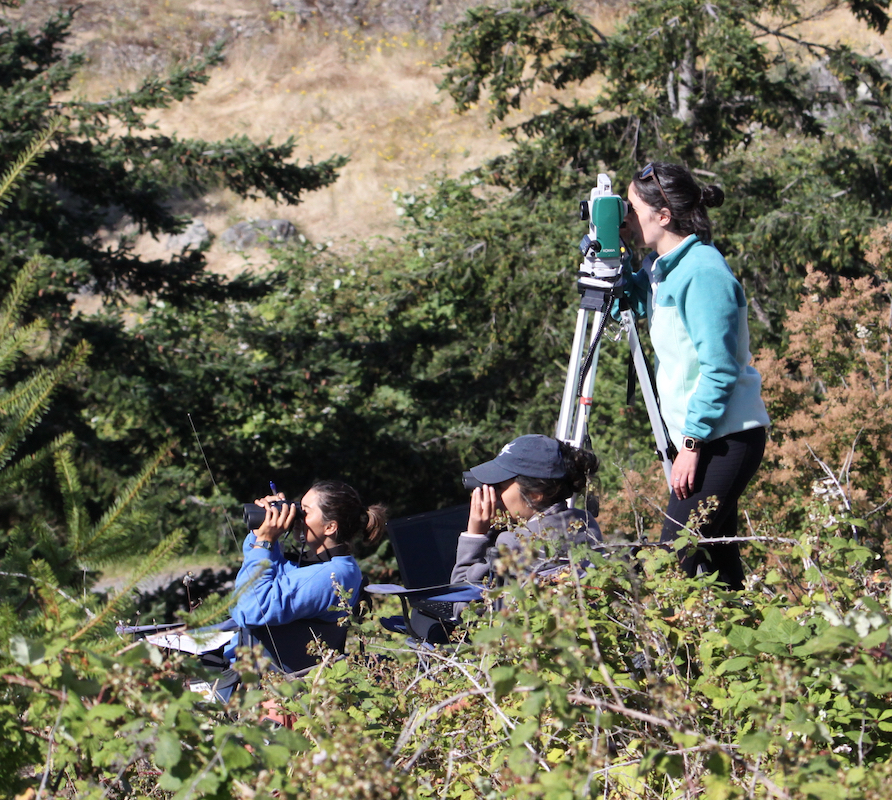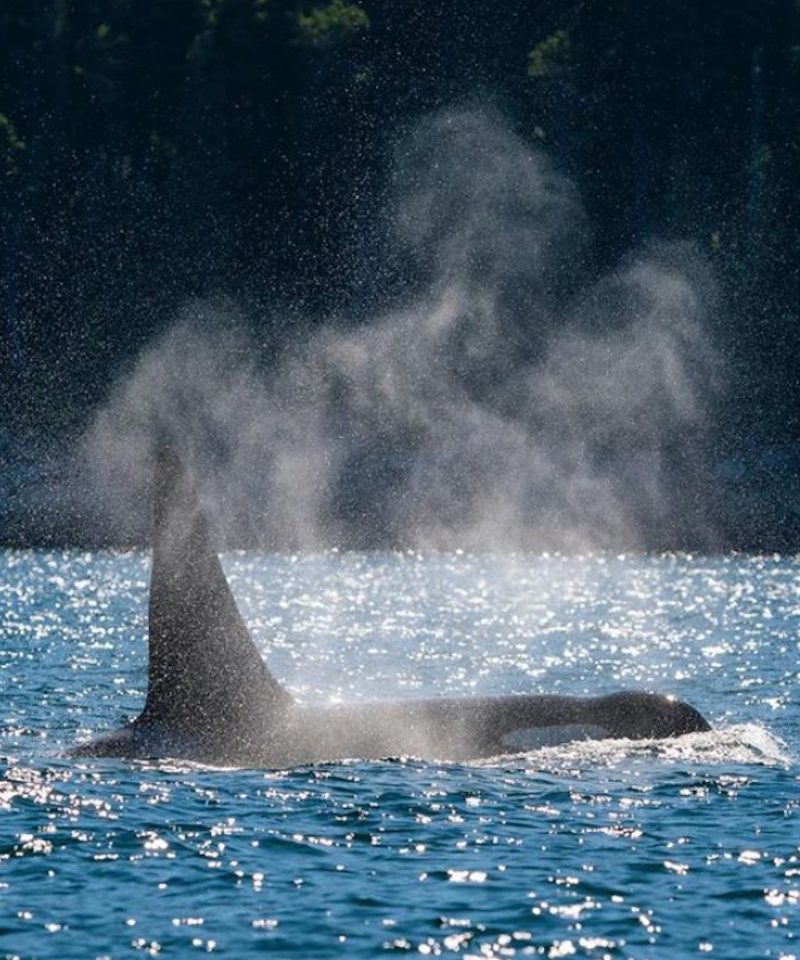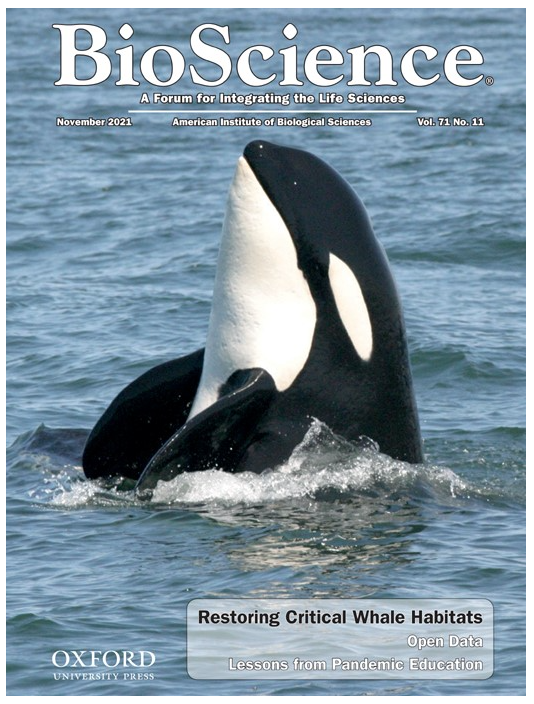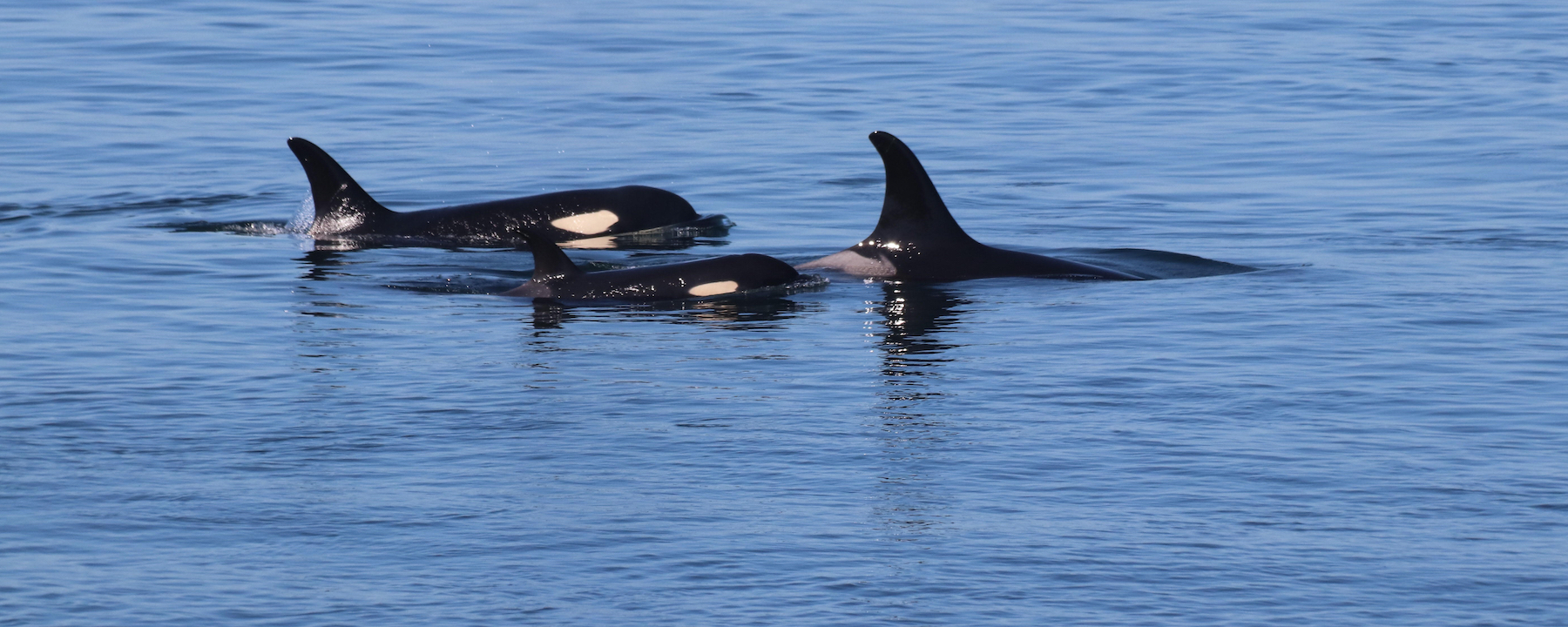Oceans Initiative is perhaps best known for conducting innovative research to understand human threats to the critically endangered southern resident killer whale (SRKW) population, and guiding effective and precautionary recovery plans.
In 2018, our scientists offered technical expertise to Governor Inslee’s SRKW Task Force, guiding key recommendations to reduce noise and disturbance by 50% to make it easier for the whales to hunt for Chinook salmon using sound. This led to legislation in 2019 protecting orcas from vessel noise.
Our Work

Assessing the Impact of Noise on Southern Resident Killer Whale Foraging
Our non-invasive research helps identify impacts of vessel noise and disturbance in SRKW’s critical habitat, and tests whether mitigation measures are working. What we hope to see is that the whales have a chance to feed more when the conditions are quiet enough for them to find food. We report our findings to the Washington Department of Fish & Wildlife and provide an assessment of the effectiveness of recently implemented whale-watching rules and licensing to inform the adaptive management of the commercial whale-watching licensing program. We do the same for Port of Vancouver. Our research showed that when ships slow down and make less noise, the whales feed more.

Protecting Salmon from Harbor Seal Predation
Oceans Initiative is guiding the use of the GenusWave Targeted Acoustic Startle Technology at Seattle’s Ballard Locks and other Puget Sound locations, to reduce harbor seal and California sea lion predation on at-risk salmon stocks. This provides a non-lethal alternative to protecting endangered salmon without harming or killing seals. Our vision is to mitigate seal predation throughout the SRKW range at Chinook salmon migration bottlenecks most important to survival and recovery of both Chinook salmon and SRKWs.
Understanding the Impact of Chinook Salmon
Availability and Accessibility on SRKW Recovery

Only 75 individuals remain in the SRKW population, which depends on a depleted prey resource, Chinook salmon. Their population dynamics are influenced by three main threats—prey limitation, anthropogenic noise and disturbance, and toxic contaminants—which are all sublethal, habitat-level stressors.
Last year, Oceans Initiative worked to understand the impact of Chinook salmon abundance on SRKW survival and recovery. We constructed a new model to quantify how salmon availability (in the ocean) and accessibility of salmon (to the whales) affect SRKW survival and reproduction. Quantifying this relationship between endangered predator and endangered prey is key to informing our predictions about how the SRKW population will respond to natural changes in Chinook salmon abundance, but also anthropogenic changes in prey accessibility (e.g., fisheries competing with whales for scarce salmon, or vessel noise and disturbance making it harder for this apex predator to find salmon in a noisy ocean). Now, we are integrating these new models in an assessment of the cumulative impacts of all stressors on SRKW recovery, to build a roadmap. Our work is quantifying how much mitigation of all threats is needed to prevent extinction of this iconic species.

Population Evaluation Tool — modeling cumulative effects of multiple lethal and sublethal stressors
This year, we are using the results of our new model (completed in 2021) to build a more comprehensive population evaluation tool that adds in all of the other stressors that the whales are facing, in addition to the lack of salmon. This project, funded by Puget Sound Partnership, will allow us to understand the relative importance of the three main identified threats (lack of prey, vessel noise and disturbance, contaminants), the importance of emerging or cryptic threats (e.g., vessel strike and fisheries interactions, disease), and to assess whether proposed mitigation measures (which currently emphasize noise reduction) will allow SRKWs to recover.
From the Blog

Destroying and Restoring Critical Habitats of Endangered Killer Whales
The population dynamics of SRKWs are now driven largely by the cumulative effects of prey limitation, anthropogenic noise and disturbance, and toxic contaminants, which are all forms of habitat degradation. It is difficult to define a single threshold beyond which permissible habitat degradation becomes unlawful destruction. In a recent paper in BioScience, with lawyers, scientists, and policy experts from Natural Resources Defense Council, Ecojustice, and the US Marine Mammal Commission, we present evidence suggesting that line may have already been crossed.
Selected Publications
Rob Williams, Erin Ashe, Laurel Yruretagoyena, Natalie Mastick, Margaret Siple, Jason Wood, Ruth Joy, Roland Langrock, Sina Mews, Emily Finne, 2021. Reducing vessel noise increases foraging in endangered killer whales. Marine Pollution Bulletin
Rob Williams, Erin Ashe, Ginny Broadhurst, Michael Jasny, Dyna Tuytel, Margot Venton, Tim Ragen, 2021. Destroying and Restoring Critical Habitats of Endangered Killer Whales. BioScience.
Williams, R., Veirs, S., Veirs, V., Ashe, E., Mastick, N. 2019. Approaches to reduce noise from ships operating in important killer whale habitats. Marine Pollution Bulletin.
Lacy, R. C., Williams, R., Ashe, E., Balcomb III, K.C., Brent, L.J.N., Clark, C.W., Croft, D.P., Giles, D.A., MacDuffee, M., Paquet, P.C. 2017. Evaluating anthropogenic threats to endangered killer whales to inform effective recovery plans. Nature. Scientific Reports 7, Article: 14119.

